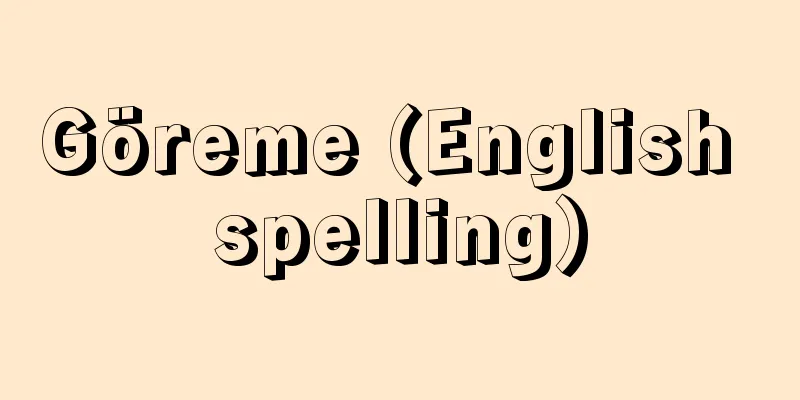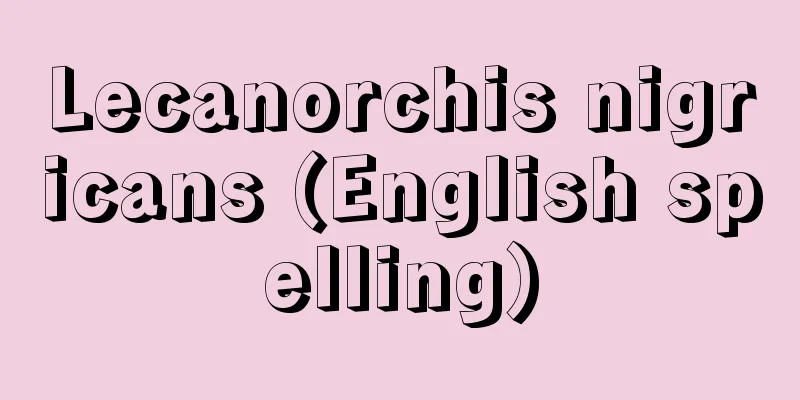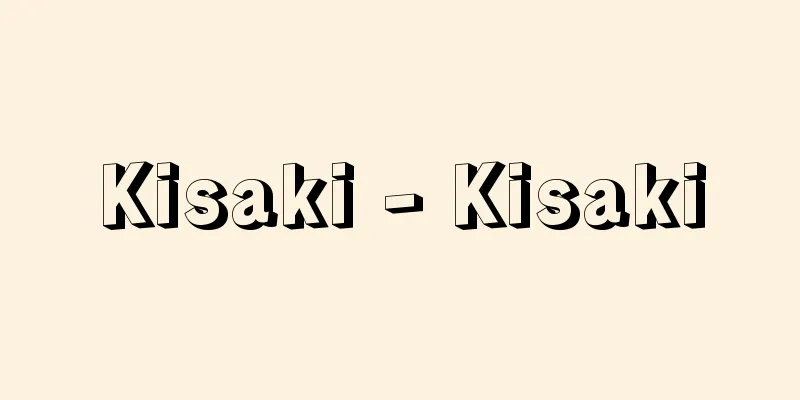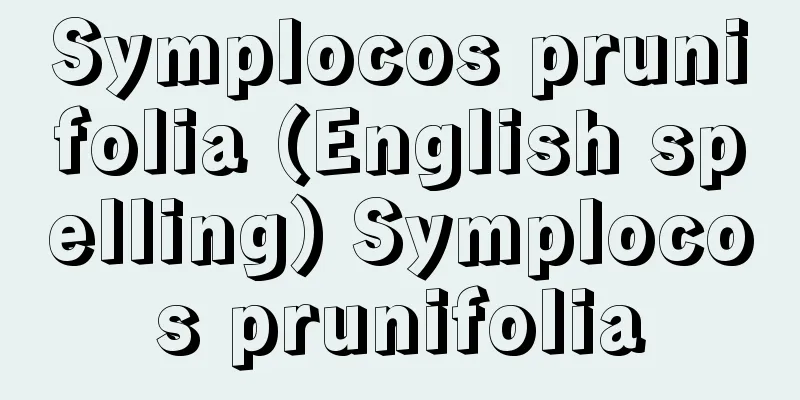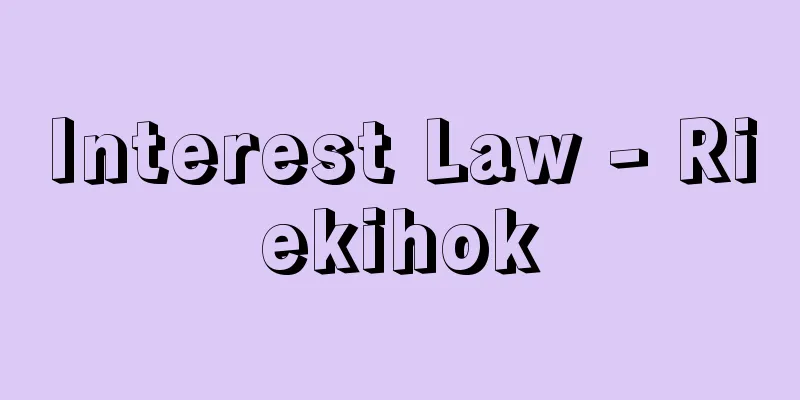War literature
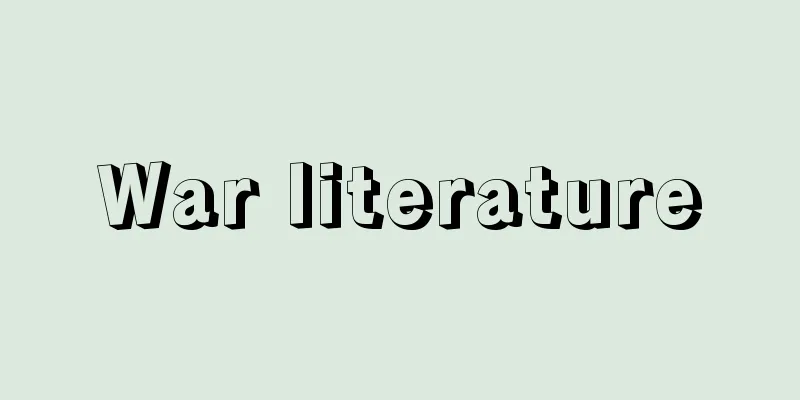
|
Literature on the subject of war. First, in terms of epic poetry, in Japan there is the lineage of military tales such as "The Tale of Hogen," "The Tale of Heiji," "The Tale of the Heike," and "The Record of the Great Peace," and in the West, literature dealing with war has been a major trend since Homer's "The Iliad" and epic poems. In addition, although not directly literary works, there are real records such as Caesar's "Commentary on the Gallic Wars," Thucydides' "History" which deals with the Peloponnesian War, and Froissart's "Annal" which deals with the Hundred Years' War, as well as historical works such as Churchill's six-volume "Memoirs of the Second World War" (1948-54), which deals with World War II. Modern war literature is essentially anti-epic and strongly anti-public (private) in character, but epic elements can be found in works such as Tolstoy's War and Peace (written 1863-69) and Norman Mailer's The Naked and the Dead (1948). In contrast to these, works that criticized war from the perspective of soldiers and individuals include, after World War I, Remarque's All Quiet on the Western Front (1929), Hemingway's A Farewell to Arms (1929), Dos Passos's Three Soldiers (1921), and others. Similar to these is the anti-war literature of postwar Japan after World War II, such as Umezaki Haruo's Sakurajima (1946) and The End of the Sun (1947), Noma Hiroshi's Vacuum Zone (1952), Ōoka Shōhei's Prisoner of War (1948) and Fires on the Plain (1951), and Ōta Yoko's atomic bomb literature, City of Corpses (1948). In the course of modern Japanese history, which can be said to have walked alongside war, the mainstream of war literature has been one that emphasizes nationalism, patriotism, and love of one's nation. These include Kunikida Doppo's Correspondence from My Beloved Brother (1894-95), set during the First Sino-Japanese War; Sakurai Tadayoshi's Human Bullet (1906), which depicts the Russo-Japanese War; and Mizuno Hironori's This Battle (1911). From the Second Sino-Japanese War through the Pacific War, there was a series of soldier-related works such as Hino Ashihei's Wheat and Soldiers (1938), Hibino Shiro's Wusong Creek (1939), Ueda Hiroshi's Yellow Dust (1938) and Construction Chronicle (1939), Niwa Fumio's Naval Battle (1942), and Iwata Toyoo's (Shishi Bunroku) Navy (1942). On the other hand, a great deal of anti-war literature was also written that extolled humanism, love for humanity, and philanthropy. This began with works such as Izumi Kyoka's "Kaijyo Hatsuden" (1896) and Hirotsu Ryuro's "Hitan" (1897) shortly after the First Sino-Japanese War, followed by anti-war poems such as Yosano Akiko's "Kimi ni tamafu koto nakare" (Do not die) (1904) and Ōtsuka Kusuoko's "O 100-step pilgrimage" (1905) during the Russo-Japanese War, followed by Tayama Katai's "Ichi Soto" (1908) from the Naturalism era, and Mushanokoji during World War I. Following works such as Mushanokoji Saneatsu's A Certain Young Man's Dream (1916), after the launch of The Sower in 1921 (Taisho 10), anti-militaristic works became more prominent. In particular, the year after the Great Kanto Earthquake, Bungei Sensen was launched, and the proletarian literary movement reached its height. This led to the rise of proletarian anti-war literature, as exemplified by the collection of creative works The War Against War (1928, published by Nansō Shoin). The book contains 20 stories, including Eguchi Kan's "The Carriage Maker and the Soldier" (1917), Ecchuya Riichi's "A Private Soldier's Notes on the Earthquake" (1927), Kuroshima Denji's "The Sled" (1927), and Tateno Nobuyuki's "That Guy Who Became a Target" (1928). Kuroshima in particular can be said to be a representative proletarian anti-war writer, and he left behind a series of excellent works about Siberia, such as "A Flock of Swirling Crows" (1928), which draws on his experiences during the harsh Siberian Expedition, as well as the full-fledged "Anti-War Literature Theory" (1929). Notable anti-war poetry collections by proletarian poets include Kitagawa Fuyuhiko's "War" (1929) and Kaneko Mitsuharu's "Shark" (1937), but this trend of anti-war literature was cut off after the outbreak of the Sino-Japanese War, and during the war there was a proliferation of war literature intended solely to boost morale. Then, after the war, there was a rise in anti-war literature, a type of literary tendency that prominently emphasized a sense of victimhood, but from the mid-1950s onwards, Japanese war literature also began to sincerely explore the fate of the Japanese people during the war, who were both victims and perpetrators, producing masterpieces such as Agawa Hiroyuki's Gravestone in the Clouds (1955) and Endo Shusaku's The Sea and Poison (1957), and, as an extension of this, Ibuse Masuji's Black Rain (1965-66), Ōoka Shohei's Record of the Battle of Leyte Island (1967-69), and Onishi Kyojin's Divine Comedy (1960-80). Other works worth mentioning include Gomikawa Junpei's The Human Condition (1956-58), Yoshimura Akira's Battleship Musashi (1966), and Tamiya Torahiko's Notes from Okinawa (1972). Furthermore, Kaiko Takeshi's Vietnam War Chronicles (1965) and Shining Darkness (1966), which were based on his experiences as a soldier in the Vietnam War, can also be said to be great achievements in the field of war literature. [Norio Okubo] "Contemporary Japanese War Literature" by Naoko Itagaki (1943, Rokuko Shokai Publishing Division) "War Literature Theory" by Takeshi Yasuda (1964, Keiso Shobo) Source: Shogakukan Encyclopedia Nipponica About Encyclopedia Nipponica Information | Legend |
|
戦争を題材とした文学。まず、叙事詩的なとらえ方のものに、日本では、『保元(ほうげん)物語』『平治(へいじ)物語』『平家物語』『太平記』などの軍記物語の系譜があり、西洋でも、ホメロスの『イリアス』や武勲詩以来、戦争を扱った文学が大きな流れをなしている。また、直接の文学作品ではないが、カエサルの『ガリア戦記』、ペロポネソス戦争を扱ったトゥキディデスの『歴史』、百年戦争のフロアサールの『年代記』などの実録や、歴史の系統のものに第二次世界大戦のチャーチルの『第二次世界大戦回顧録』六巻(1948~54)がある。近代の戦争文学は本質的に反叙事詩的、反公共的(私的)な性格が強いが、トルストイの『戦争と平和』(1863~69執筆)やノーマン・メーラーの『裸者と死者』(1948)などに叙事詩的な流れが認められよう。 これらと対蹠(たいせき)的に、兵士・個人の観点から戦争批判を打ち出したものに、第一次大戦後の、レマルク『西部戦線異状なし』(1929)、ヘミングウェイ『武器よさらば』(1929)、ドス・パソス『三人の兵士』(1921)その他があり、これらと同種のものとして、第二次大戦後の日本の戦後派の反戦文学、梅崎春生(はるお)の『桜島』(1946)・『日の果て』(1947)、野間宏(ひろし)『真空地帯』(1952)、大岡昇平『俘虜(ふりょ)記』(1948)・『野火』(1951)、大田洋子の原爆文学『屍(しかばね)の街』(1948)などがある。 いわば戦争とともに歩んできたともいえる日本の近代史の流れのなかで、戦争文学はナショナリズム、愛国心、民族愛を強調したものが主流をなした。日清(にっしん)戦争下の国木田独歩(くにきだどっぽ)の『愛弟通信』(1894~95)や、日露戦争を描いた桜井忠温(ただよし)の『肉弾』(1906)、水野広徳(ひろのり)の『此(この)一戦』(1911)、日中戦争から太平洋戦争にかけて、火野葦平(あしへい)の『麦と兵隊』(1938)以下一連の兵隊もの、日比野士朗(しろう)『呉淞(ウースン)クリーク』(1939)、上田広『黄塵(こうじん)』(1938)・『建設戦記』(1939)、丹羽(にわ)文雄『海戦』(1942)、岩田豊雄(とよお)(獅子文六(ししぶんろく))『海軍』(1942)などがあった。 この反面、ヒューマニズム、人間愛、博愛心をうたった反戦文学も数多く書かれている。日清戦争直後の泉鏡花(きょうか)『海城発電』(1896)、広津柳浪(りゅうろう)『非国民』(1897)などに始まり、日露戦争下の与謝野晶子(よさのあきこ)『君死にたまふこと勿(なか)れ』(1904)、大塚楠緒子(くすおこ)『お百度詣(まいり)』(1905)などの反戦詩、続いて自然主義時代の田山花袋(かたい)『一兵卒』(1908)、第一次大戦下の武者小路実篤(むしゃのこうじさねあつ)『或(あ)る青年の夢』(1916)などを経て、1921年(大正10)の『種蒔(ま)く人』創刊以後、反軍国主義的な作品群が目だつようになり、とくに関東大震災の翌年『文芸戦線』が創刊され、プロレタリア文学運動が全盛期を迎えるや、創作集『戦争に対する戦争』(1928・南宋書院刊)に代表されるプロレタリア反戦文学の盛行をみるに至る。同書には、江口渙(かん)『馬車屋と軍人』(1917)、越中谷利一(えっちゅうやりいち)『一兵卒の震災手記』(1927)、黒島伝治『橇(そり)』(1927)、立野信之(たてののぶゆき)『標的になった彼奴(あいつ)』(1928)など20編が収められているが、とりわけ黒島はプロレタリア反戦作家の代表的存在といってよく、過酷なシベリア出兵時の体験を生かした『渦巻ける烏(からす)の群』(1928)その他一連のシベリアものの佳作のほか、本格的な『反戦文学論』(1929)を残している。プロレタリア詩人による反戦詩集としては、北川冬彦『戦争』(1929)や金子光晴(みつはる)『鮫(さめ)』(1937)が注目されるが、こうした反戦文学の流れも日中戦争勃発(ぼっぱつ)後断ち切られ、戦争中はもっぱら戦意高揚を意図した戦争文学が氾濫(はんらん)する。そして、戦後は逆にその反動として、被害者意識を全面に押し出した傾向文学としての反戦文学の隆盛をみるが、1950年代のなかば以後、日本の戦争文学も、被害者でありながら同時に加害者であった戦争下の日本人の運命を真摯(しんし)に追求するようになり、阿川弘之(ひろゆき)の『雲の墓標』(1955)や遠藤周作の『海と毒薬』(1957)、それから、その延長線上に、井伏鱒二(ますじ)の『黒い雨』(1965~66)や大岡昇平『レイテ戦記』(1967~69)、そして大西巨人(きょじん)『神聖喜劇』(1960~80)などの大作を生んだ。ほかに五味川(ごみかわ)純平の『人間の条件』(1956~58)、吉村昭(あきら)の『戦艦武蔵(むさし)』(1966)や田宮虎彦(とらひこ)の『沖縄の手記から』(1972)もあげておきたい。 また、ベトナム戦争に従軍、その体験をもとに描いた開高健(かいこうたけし)の『ベトナム戦記』(1965)や『輝ける闇(やみ)』(1966)なども、戦争文学の一大収穫といえよう。 [大久保典夫] 『板垣直子著『現代日本の戦争文学』(1943・六興商会出版部)』▽『安田武著『戦争文学論』(1964・勁草書房)』 出典 小学館 日本大百科全書(ニッポニカ)日本大百科全書(ニッポニカ)について 情報 | 凡例 |
<<: War Insurance - war risks insurance
Recommend
Pipe network - Kanmo
The layout of the city's piping system. A map ...
Tangent plane
Let the functions x = x ( u , v ), y = y ( u , v )...
Adelaide - Adelaide (English spelling)
It is the capital of the state of South Australia...
Porridge - Kayushoku
...Dietary therapy can be broadly divided into ge...
Mahanadi [river] - Mahanadi
A river in the eastern Deccan Peninsula of India. ...
Graal
…It is a legend strongly influenced by Christiani...
Dinodon orientalis (English spelling) Dinodon orientalis
… [Takahiro Matsui]. … *Some of the terms that me...
vānaprastha (English spelling)
...The four stages that Indian Brahmins should go...
Turtle chrysanthemum - Kamegiku
Year of birth: Year of birth and death unknown. Sh...
Ryti, R. (English spelling) RytiR
...in office 1919-25). During World War II, the g...
Flame light filtration photometry
...There are two methods of flame photometry: (1)...
Tao Zong-yi; T`ao Tsung-i
A Chinese scholar in the late Yuan and early Ming ...
Ahem - Ahem
...The alcohol content is around 4% (by volume). ...
Memphis (English spelling)
An ancient city located 20km south of Cairo, Egypt...
Mematoi (eye wrap) - Mematoi (English spelling) eye gnat
It does not refer to a specific insect, but is a g...



